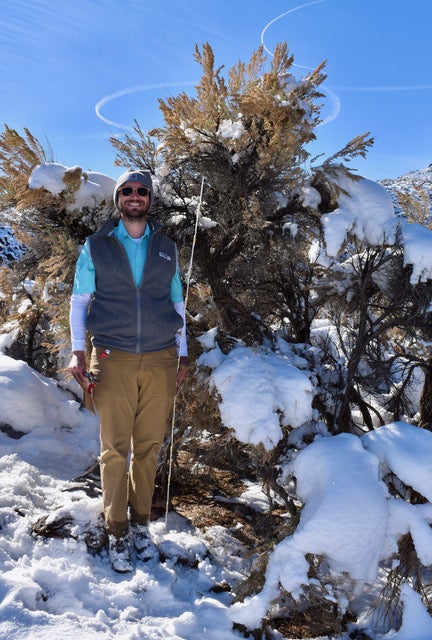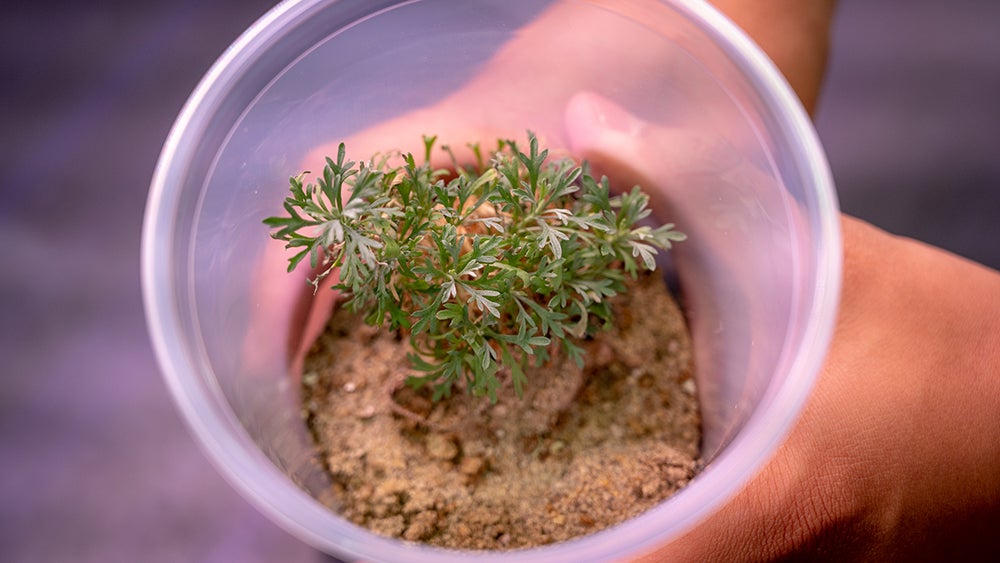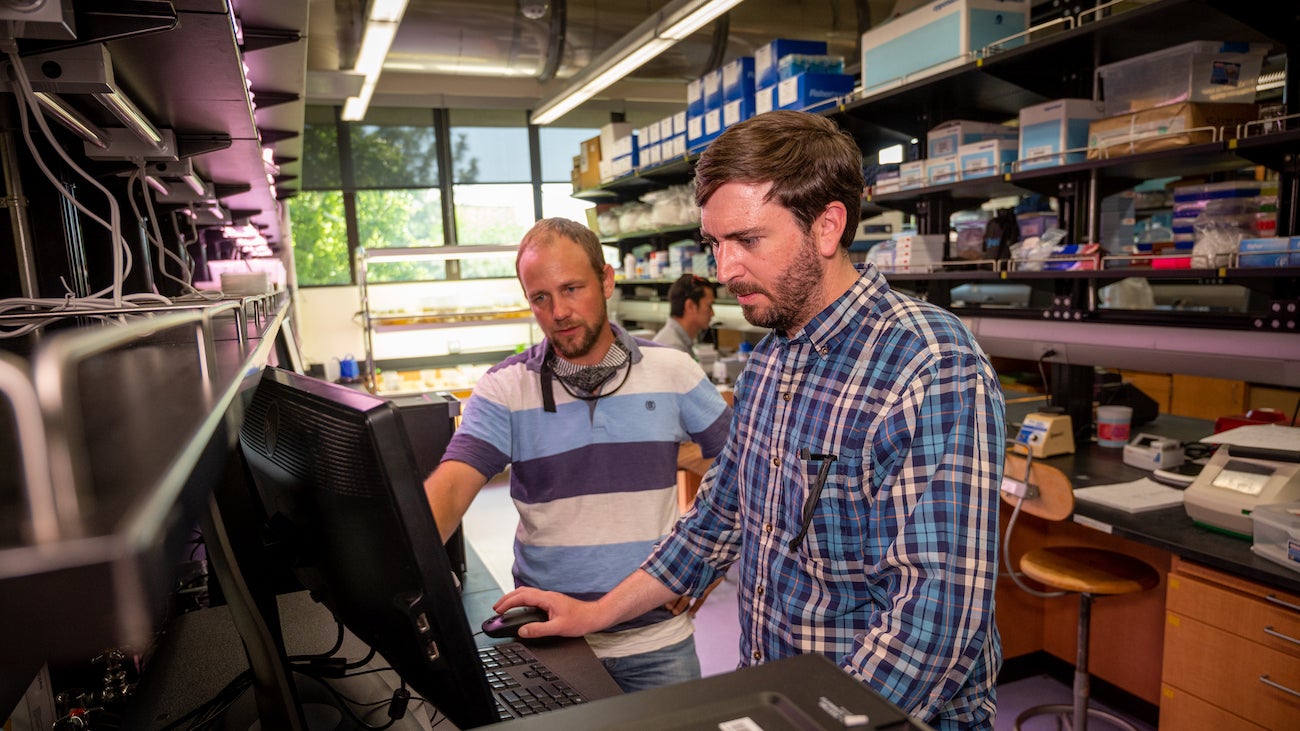
It can be easy to take things for granted: sometimes even entire ecosystems. According to the National Wildlife Federations, the sagebrush steppe that we know so well in Idaho covers 165 million acres in the American West and in one Canadian province. Sagebrush itself is a habitat, food source and more for at least 350 species such as sage grouse, Pronghorn antelope, and pygmy rabbits.
But the sagebrush steppe is facing challenges it has never faced before. While the species is no stranger to drought or wildfire, the impacts of climate change, invasive plant species and megafires are taking their toll. According to a report published by the United States Geological Survey, the sagebrush steppe “is one of the most imperiled ecosystems in the world.”
That’s why postdoctoral researcher associate Anthony Melton and assistant professor of biology Sven Buerki are working with collaborators in and outside of Idaho to collect genetic information about sagebrush (Artemisia tridentata from the sunflower family) in order to protect the species and the ecosystem. Through their research, it might be possible to select and establish sagebrush with specific genetic abilities to handle the challenges of climate change.
Virtually tour the team’s research facilities and meet members
“I live in Horseshoe Bend, in sagebrush country, and I deeply care about this habitat,” Buerki said. “The research that my lab is pursuing aims at estimating how the sagebrush genome contributes to the species’ ability to cope with rapid changes in our landscape. Our ultimate goal is to identify sagebrush seedlings able to germinate and colonize the landscape post-fire, where the effects of drought and heat are currently causing high mortality and therefore impacting on population sustainability.”

To do this, Buerki and Melton worked with the United States Forest Service to extract DNA from a sagebrush population originating from the area around Mountain Home, Idaho. They sent the samples to Alabama for genome sequencing. Amazingly, the sagebrush genome is two and a half times larger than the human genome.
“To put this in perspective, if we were to stretch out the DNA molecule in each cell, it would measure 2.8 meters (9.18 feet),” Buerki said.
The team then began mining the DNA for Aquaporin genes. Aquaporin genes code for proteins moving water and carbon dioxide into the plant and are key for water uptake and photosynthesis. From their study of the genome, the team can better determine what species of sagebrush will have a better chance of surviving and staying healthy through drought, and protecting the landscape in the face of wildfire.
“We also think that these sagebrush would remain green during the peak of the summer drought, therefore acting as fire breaker and enabling the restoration of this habitat, which provides us with key ecosystem services and is home to iconic wildlife,” Buerki said.
Research lead Melton said, “We want to take this research to a really broad landscape scale, identifying populations that are more able to adapt to drought stresses, and using that information to better inform conservation efforts.”

The team’s research is supported by Idaho’s GEM3 (Genes by Environment: Modeling, Mechanisms, Mapping) program, under grant number OIA-1757324. This program is a collaboration of Boise State, University of Idaho and Idaho State researchers supported by National Science Foundation EPSCoR (Established Program to Stimulate Competitive Research).
Melton and Buerki conducted and published this research in collaboration with Computational Math Science and Engineering student Jim Beck, GEM3 postdoc Stephanie Galla, Boise State faculty Professor Stephen Novak and Professor Marcelo Serpe, Bryce Richardson of the U.S. Forest Service, and colleagues at HudsonAlpha, an Alabama institute for biotechnology leading in genome sequencing.
“I am really excited by the opportunity to be working for our community and doing so by involving a maximum of people, especially our student community. The network of collaborations arising from this project is humongous and it will not only benefit our research at Boise State, but also provide unique opportunities for our students,” Buerki said.